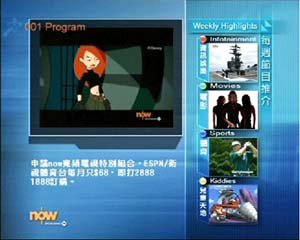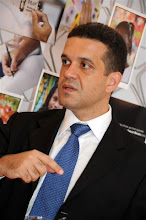Archive for 2005
2006 Flexfuel year
These technologies are used in small scale in some countries. They also signal possibilities that can be better explored, in the average stated period, for the use of cleaner and efficient power plants.
With World Cup, elections and Brazilian in the space, 2006 will be one year very agitated in Brazil and the national automotive market promises to follow this sped up rhythm. We will have in the country the main event of the sector, the Salão do Automóvel in São Paulo - a biennial event - and also the official celebration of the 50 years of the Brazilian automobile industry.
In two weeks, will appear the C3 1,4 Flex, anticipating that the proliferation of bifuels continues. As much that still in January the Corsa Classic and Fiesta 1,0 also will become bifuels. Still in the period pre-carnival, Fiat will launch the Doblò bicombustible version.
The rhythm of launchings will be still more sped up in April. With bold style, the national sedan of Honda will have a new engine 1,8 and must still have versions flexfuel - the Honda Fit also will become bifuel in 2006.
Have a nice Flexfuel year in 2006!

(Source: Anfavea - Associação Nacional dos Fabricantes de Veículos Automotores)
Flex-fuel I (gasoline/hidrated alcohol or not) - the multicombustible archetype is equipped with Zetec RoCam engine developed to use, in the same tank, as much hidrated alcohol as pure gasoline or gasohol - gasoline mixed alcohol, as the one of the Brazilian market. This flexibility, besides providing the advantage of choice of the available or more economic fuel in each situation, simplifies the system of feeding of the vehicle, that excuses the installation of independent storage compartments.
CEMPRE + Design - Residue
 The Enterprise Commitment for Recycling - Cempre and the Design and Nature Institute had recently announced the result of the prize "CEMPRE + Design - Residue", promoted with the objective to stimulate creative solutions of design for the reuse and recycling of industrial solid residues and solid residues after consume.
The Enterprise Commitment for Recycling - Cempre and the Design and Nature Institute had recently announced the result of the prize "CEMPRE + Design - Residue", promoted with the objective to stimulate creative solutions of design for the reuse and recycling of industrial solid residues and solid residues after consume.The designer Adriano Oak gained the main prize of the professional category with its garbage for solid residues selective collection. For better efficiency the product is produced with recicled plastic and divided in three stocks that had access with the drive of a pedal. In this way, the user obtains more deposit to the specific garbage in the adjusted compartment. The garbage is already being used in some brazilian schools and is expected to begin in production this year.

In second place, the designer Fabíola Bergamo conceived an overlap sink done with pipes of folder of recycled Closeup toothpaste and aluminum. The Tubitos cardboard chair, designed by Sérgio Faher and Simone Mattar, gained the third place.
The Tubitos cardboard chair, designed by Sérgio Faher and Simone Mattar, gained the third place.
* The Enterprise Commitment for Recycling - Cempre, is an association at Jd. Paulista - São Paulo, dedicated to the promotion of the recycling inside the concept of garbage integrated management. Established in 1992, Cempre is kept by private companies of diverse sectors.
Skol Geladona
The isolation makes that the drink remain frozen, for 50% to 70% beyond the average time. It costs, however, above of the average: R$ 1,95 (suggested price). The common Skol (473 milliliters) leaves for R$ 1,75.
* AmBev is the largest private industry of consumer goods in Brazil and the largest brewer in the Latin America. The Company was established on July 1, 1999, by means of the association between Brahma and Antarctica. AmBev, leader in the Brazilian beer market, is present in 14 countries. The Company is a worldwide benchmark in terms of management, growth and profitability. Through the global alliance with InBev, entered into on March 3, 2004, the Company started to operate in the North America by merging the Canadian company Labatt, and becoming the Brewer of Americas.
Sindec

The Consumer's Defense Secretary of Rio De Janeiro (Procon-RJ) entered in the National Information System of Consumer Defense (Sindec), an information system that integrates all the brazilians Procon databases. The Sindec implantation allows an harmonization on the attendance of all the Procons and the creation of a national consolidated database. When consulting the system, a Rio de Janeiro's consumer will be able to know which of the companies there are more claims against, which are the recurrent problems in each state, and will be able to see, instantly, graphs that summarize those datas.
With the entrance of Rio de Janeiro, there are already ten states that use Sindec and leave available their data of attendance in the Internet: Paraíba, Tocantins, Acre, Bahia, Espirito Santo, Goiás, Minas Gerais, Mato Grosso, Pará and Rio De Janeiro. Throught the site (www.mj.gov.br/dpdc/sindec), the consumer can verify if there are registers in the Procons involving determined company and the profile of these registers.
The system is divided in seven areas: food, products, habitation, private services, essential services, financial services and health. Acessing the claims registered in Rio de Janeiro's Procon in the period of December 2 to 18, it is pointed that the area of financial services is the most demanded, with 32,8% of the complaints; in second place there is the essential services (32,2%), and in third place the products area (20,8%). The most concentrate problems are concerned to credit cards (11,7%), followed by fixed telephony (11,4%) and cellular telephony (10%). The questions complained are improper and/or abusive collection, or defects of products. In these 17 days of functioning of the system, the companies with more claims in the Procon are: Telemar, Light, Vivo, Credicard, Banco Ibi, Claro, Casas Bahia, Banco Itaú, TIM e Fininvest.
Bamboo Leaf Shampoo
 The New Line of Bamboo Leaf from Lilás Cosmeticos*, with sprout of bamboo extract, an efficient combat form of extreme oleosity, revitalizes the root of the quimicaly hair treat, protecting them against the harmful effect of the sun, chlorine of the swimming pool. Of this form you return to the force and the health, preventing the fall, stimulating the growth, besides leaving them soft and with natural brightness.
The New Line of Bamboo Leaf from Lilás Cosmeticos*, with sprout of bamboo extract, an efficient combat form of extreme oleosity, revitalizes the root of the quimicaly hair treat, protecting them against the harmful effect of the sun, chlorine of the swimming pool. Of this form you return to the force and the health, preventing the fall, stimulating the growth, besides leaving them soft and with natural brightness.* The Lilas Cosméticos has been presenting to the market products that use concepts and up-to-date raw materials, due to yours of the technological resources and to the study and work of professional experts.
Pirai Digital
 The remote hill town of Pirai, 80 km north of Rio, has seen its struggles over the years. Because of privatization of the local power utility and layoffs by the pulp and paper industry, Piraí has the loss of 4,000 jobs.
The remote hill town of Pirai, 80 km north of Rio, has seen its struggles over the years. Because of privatization of the local power utility and layoffs by the pulp and paper industry, Piraí has the loss of 4,000 jobs.But the mayor, Luis Fernando de Souza Pezão, wasn’t about to give up on his town. “Bigfoot,” as the mayor is nicknamed, used all his political savvy to pull together two dozen public and private sector partners to build a high-speed broadband network to revive Piraí — streamlining city operations and providing citizens with the economic and social benefits of digital inclusion.
In the wake of Piraí’s success, the governor of the State of Rio de Janeiro has launched a Digital Municipalities initiative and hired Mayor De Souza to help connect 92 more towns and cities around the state.
CHAT TV
 CHAT TV is an interactive chats room created by Ntime that successfully combine mobile and TV. Through sending SMS the users have their messages presented in the television screen, where they can talk with people of diverse parts of Brazil.
CHAT TV is an interactive chats room created by Ntime that successfully combine mobile and TV. Through sending SMS the users have their messages presented in the television screen, where they can talk with people of diverse parts of Brazil.Systems of Innovation
 Confronting the challenges and opportunities of the knowledge era, this text focuses particularly on the new conditions for industrial and technological development. The contributors address many of the most significant issues including the globalizing learning economy, the finance dominated accumulation regime, learning and development divides, systems of innovation and local productive arrangements. They also define the conceptual and methodological instruments which can be used to analyse and understand the core issues of learning, knowledge and innovation. In doing so, they demonstrate the value of the systems of innovation approach in the design and implementation of strategic development policies which are urgently required in many countries.
Confronting the challenges and opportunities of the knowledge era, this text focuses particularly on the new conditions for industrial and technological development. The contributors address many of the most significant issues including the globalizing learning economy, the finance dominated accumulation regime, learning and development divides, systems of innovation and local productive arrangements. They also define the conceptual and methodological instruments which can be used to analyse and understand the core issues of learning, knowledge and innovation. In doing so, they demonstrate the value of the systems of innovation approach in the design and implementation of strategic development policies which are urgently required in many countries.This book represents a significant contribution to the debates surrounding globalization and local systems of innovation. The diverse perspectives on global and local processes combined with original insights on developing countries should be of value to scholars and students of economics, social science, political science and business administration. The book should also be of interest to policymakers in governmental and non-governmental bodies, particularly international development agencies.
Indio da Costa
 Guto Indio da Costa, one of the most appraised Brazilian designers, became a celebrity for giving new and successful routes to the companies whom desire to become more competitive. In its office in Rio De Janeiro, together with its partners, Martin Birtel and Eduardo Azevedo, and a team of 20 professionals, he is responsible for the elaboration of intelligent and lucrative projects. The company goal is to create innovative solutions, making more attractive products and more competitive manufacturers.
Guto Indio da Costa, one of the most appraised Brazilian designers, became a celebrity for giving new and successful routes to the companies whom desire to become more competitive. In its office in Rio De Janeiro, together with its partners, Martin Birtel and Eduardo Azevedo, and a team of 20 professionals, he is responsible for the elaboration of intelligent and lucrative projects. The company goal is to create innovative solutions, making more attractive products and more competitive manufacturers.Natura Cosméticos S.A.
 In approximately 4 thousand m², distributed in five floors, the Innovation Center of Natura Space shelters the research and development laboratories, market area, mini-plant (or pilot plants, as called by the company) to reproduce all the process of manufacture of a new product before placing it in production, and the Consumer Center, where consumers evaluate the already existing products and the ones that will be launched. The consumer perception is evaluated by olfative chambers, sensorial cabins, hair hall of beauty for makeup test and products, hidro bathtub and shower, climatized rooms for hidratation tests and room of analysis of the skin look. The change of the industrial plant to Cajamar, in 2001, also brought the implantation of the Biochemist and Reconstructed Skin laboratory. Through the in vitro technology and with controlled environment to reduce contaminants agents, the company tests the interaction of the active principles with the complex skin's biochemical structure. Natura invests annually about 4% of its net revenue in scientific evidence, development of new products and technological platforms.
In approximately 4 thousand m², distributed in five floors, the Innovation Center of Natura Space shelters the research and development laboratories, market area, mini-plant (or pilot plants, as called by the company) to reproduce all the process of manufacture of a new product before placing it in production, and the Consumer Center, where consumers evaluate the already existing products and the ones that will be launched. The consumer perception is evaluated by olfative chambers, sensorial cabins, hair hall of beauty for makeup test and products, hidro bathtub and shower, climatized rooms for hidratation tests and room of analysis of the skin look. The change of the industrial plant to Cajamar, in 2001, also brought the implantation of the Biochemist and Reconstructed Skin laboratory. Through the in vitro technology and with controlled environment to reduce contaminants agents, the company tests the interaction of the active principles with the complex skin's biochemical structure. Natura invests annually about 4% of its net revenue in scientific evidence, development of new products and technological platforms.The Natura Cosméticos s.a. mission is to contribute to innovation to benefit the majority, promoting changes of attitudes and values that create a just society.
BNDES must spend R$ 400 mi for Services
Brazilian design
Brazilian music is well established; and its art and architecture are world-renowned. However, Brazilian design is still trying to find a national visual language. Design in Brazil has grown and established itself under conditions of huge economic instability. Brazilian design today reflects who Brazilians are and how they live: diversity, colors, inequality, happiness and paradoxes all reflect the culture. Tired of cliché of images such as tropical birds, soccer, carnival, and Indians; Brazilian designers, influenced by the western culture, are doing design that appeals to a diverse global audience. The conflict between the traditional design aesthetics and western-influences, has become an issue for Brazilian designers. Easy access to cable television and the internet have made non-Brazilian influences more prevalent. Finding a balance between traditional design vocabularies and western design influences is key to the success of designers in Brazil.
Brazilian Digital Television

The Brazilian Ministery of Communications have chosen the Japanese digital television (DTV) model, that must be the best on high definition images and on mobile solutions, in meanwhile the Internet TV (IPTV) market in the Asian region overall is predicted to grow to a value of $300 million during 2005. The number of IPTV subscribers in the Asia/Pacific region (excluding Japan) is expected to grow from nearly half a million subscribers in 2004 to over 20 million subscribers by 2009. Providers have unveiled IPTV services, or are running market trials in seven out of the thirteen Asia-Pacific economies.
Agroindustries information
Embraer Aircraft Family 170/190

Embraer ocuppied an unexplored niche, the 70 to 110 seats market. Since the product launch, in 1999, more than 400 models had been sold.
Low cost Mobile
 According to Anatel - the Brazilian Telecommunications Agency, 80 million brazilians have cellular telephones. Now, that we have conquered the A, B and C classes it is time to the cellular telephony to run over the "extreme low income" classes - the parcel of the population that cannot pay for a device and nor has minimum conditions to keep the line.
According to Anatel - the Brazilian Telecommunications Agency, 80 million brazilians have cellular telephones. Now, that we have conquered the A, B and C classes it is time to the cellular telephony to run over the "extreme low income" classes - the parcel of the population that cannot pay for a device and nor has minimum conditions to keep the line.The first step for a bigger access universalization to the telephony in Brazil is the production in large scale of low cost devices. Philips, through its semiconductors division, presented, at Futurecom, a project of low cost mobiles through the reduction of components. The idea is to create a software and hardware platform capable to handle all the necessary elements for the device with prices of US$ 20 or less.
Innovation Prizes
 The Institute of Innovation* argues through this article how the innovation prizes can contribute with the promotion of the culture of technological innovation inside of the companies. In the same way that the quality prizes had contributed for the promotion of the culture of the quality in the past decades, the innovation prizes must fulfill a similar paper in this decade. In this article the main prizes of innovation in Brazil are pointed and considered a model of how they can contribute for the promotion of the culture of innovation inside those companies.
The Institute of Innovation* argues through this article how the innovation prizes can contribute with the promotion of the culture of technological innovation inside of the companies. In the same way that the quality prizes had contributed for the promotion of the culture of the quality in the past decades, the innovation prizes must fulfill a similar paper in this decade. In this article the main prizes of innovation in Brazil are pointed and considered a model of how they can contribute for the promotion of the culture of innovation inside those companies.* The Institute of Innovation is a business-oriented accelerator with focus in technology, that works in the induction, promotion and development of the technological innovation in Brazil.
Submarino.com buys Ingresso.com
Submarino.com* (SUBA03:IBOVESPA) announced this thrusday the purchase of the online tickets selling website Ingresso.com. The operation value is of R$ 8,3 million. To conclude the business, 51,5 a thousand common shares had been acquired, for the average value of 100,93 Reals, and 21,8 preferred stocks, for about 164,98 Reals each.
The operations are integrated already and Ingresso.com brings an acknowledgment that the customer deals with a Submarino company, while the online retailer detaches tickets selling in its first page.
Ingresso.com mark will be kept and its founders, Jorge Alberto Reis and Mauro Gonzalez will continue heading the operations. The plans also foresee the maintenance of the 18 employees. The businesses of the two companies must suffer symbioses with time, as sellings of DVDs with discounting for who attended the film in the cinema buying tickets online.
The colloquies between Submarino and Ingresso.com had started in March, when the first one made its IPO (it innitial public offers in the São Paulo stock exchange: BOVESPA).
The acquisition of Ingresso.com is lined up with Submarino strategy to launch four new categories of products per year. In 2005, it had inaugurated already for personal account, sections of eletronics, parfums and musical instruments. In the online tickets selling case, it was opted to searching a external solution partner, since it would involve a very heavy technological development.
* Submarino.com concluded the year of 2004 with a prescription of 361 Real million - a growth of 68% on the previous year - with about 1,8 million of order delivers the 914 a thousand customers.
Petrobras Research Center
PETROBRAS (BOVESPA: PETR3 - PETR4) WAS FOUNDED IN OCTOBER OF 1953 TO OPERATE IN THE BRAZILIAN OIL SECTOR. The company has become the country's leader in the distribution of oil products and is internationally acknowledged as one of the largest major oil companies in the world today, leading the sector in the implementation of the most advanced deep-water technology for oil production.
PETROBRAS operates in a large number countries around the world. CENPES *, the PETROBRAS research center, uses and develops advanced technologies and is internationally renowned for its expertise. CENPES Basic Engineering division play a fundamental role inside all areas in PETROBRAS making Brazil one of the leading countries in oil industry technology.
The Cenpes consolidated itself as the largest Research Center in Latin America, the winner of the top prize in the world oil sector, the Offshore Technology Conference, in recognition of its remarkable contribution to the advance of deepwater production technology. Petrobras now allocates 1% of its gross income to the Center, and, thus, is among the companies that invest the most in research and development in the world.
* Petrobras Research and Development Center coordinates all technology development needed by Petrobras. Its main investigation lines include exploration (very deep waters) and production, industrial research, basic engineering and analytical chemistry. Cenpes will present the Ocean laboratory, a deep water simulation tank, together with the Federal University of Rio de Janeiro, and a chemical process for producing DME (dimethylether) directly from the synthesis gas, together with the National Institute ofTechnology.
With more than 1,500 employees over an area of 122,000 square meters, the Cenpes has 30 pilot units and 137 laboratories that attend the Company's agencies. The technologies the Cenpes has developed have resulted in 950 applications for international patents and 500 for Brazilian patents, in addition to a considerable number of registered trademarks.
The force of games

A Stock Exchange Application or a Store Management interface in the near future. So powerfull and user friendly than any other that you have ever seen, operated by the mobile phones.
In spite of that, there is a new generation of entrepreneurs whom discovered to gain money with that market behavior change that occured in the last 10 years. Their work is to invent new features for a younger public, between 16 and 28 years, that like to play, to download music or to order messages for the mobile devices.
Their products had growth to a US$ 250 million profit to the operators on mobile telephony in this year. Of this total, it is calculated that those SMEs companies raised US$ 75 million. Five years ago, only a few companies (10, almost in academic area and universities) existed creating this type of content. Today, they are already about 120 in Brazil. And there are more people entering in the branch, also foreign ones, that sees Brazil as a promisse field for this kind of business.
Quantum Computation
 Project Giga is a large-scale networking testbed including many, varied activities, such as grid software and applications. In a paternship between RNP (Brazilian NREN), CPqD (telco industry R&D centre in Campinas, SP) and R&D community in industry and universities to support R&D subprojects in optical and IP networking technology and advanced applications and services.
Project Giga is a large-scale networking testbed including many, varied activities, such as grid software and applications. In a paternship between RNP (Brazilian NREN), CPqD (telco industry R&D centre in Campinas, SP) and R&D community in industry and universities to support R&D subprojects in optical and IP networking technology and advanced applications and services.Mobile Ubiquitous
Brazil will overtake Japan in 2007, rising to 4th in the world with under 25s responsible for the majority of the 10 million new subscriptions.
Nokia, greater manufacturer of mobile devices of the world, said in the last month that waited that the mark of the two billion world mobile market was reached in the last quarter of the year. The Finnish group was responsible for 31,9% of sells of mobile phones in the second quarter, followed by the american Motorola (17,9%) and for the korean Samsung (12,8%), acording to Gartner.
Despite rising ownership levels, mobile revenues are in decline. As ownership in the $12 bn annual mobile market rises, ARPU is falling - from $16 pcm in 2004 to $10.4 pcm in 2007. Prepaid accounts for the majority of new subscriptions.
In Brazil, the August month registered a growth of 2 million to the users base, totalizing 78 million subscribers of Mobile Personal Service (SMP) in all the domestic territory. It was as the bigger number of qualifications of the year, only inferior to the registered one in May, according to National Agency of Telecommunications (Anatel). In the year, they had been registered 13.341.755 new qualifications.
The pay-paid terminals continue to gain space. Of the total of mobile accesses in service, 81.18% are daily pay-paid. The teledensity, international index that points the number of cellular in service with respect to each group of one hundred inhabitants, went up for 42,85, an increase of 2,96% in relation the July and 16,98% in relation the December of 2004.
Data usage is on the rise, contributing under $1 to ARPU in 2006, although this is predominantly SMS (a $700 million a year market).
Data contained in the report on: Vivo (Telesp Celular,Tele Centro Oeste, Tele Leste Celular, CRT Celular, Tele Sudeste), TIM (Tele Celular Sul, Tele Nordeste Celular), Claro , Oi Cellular, Amazonia/Telemig, Brasil Telecom, Telefonica.
Brazilian Innovation Agency - FINEP
 Financiadora de Estudos e Projetos — FINEP (Research and Projects Financing), also known as the Brazilian Innovation Agency, is a publicly owned company subordinated to the Ministry of Science and Technology — MCT. It was founded on July 24, 1967 with the purpose of financing scientific and technological research and graduate courses in Brazilian universities and research institutions, as well as research and development in companies. In 1971, FINEP became the Executive Secretary of the newly created Fundo Nacional de Desenvolvimento Científico e Tecnológico — FNDCT (Funding for Scientific and Technological Development).
Financiadora de Estudos e Projetos — FINEP (Research and Projects Financing), also known as the Brazilian Innovation Agency, is a publicly owned company subordinated to the Ministry of Science and Technology — MCT. It was founded on July 24, 1967 with the purpose of financing scientific and technological research and graduate courses in Brazilian universities and research institutions, as well as research and development in companies. In 1971, FINEP became the Executive Secretary of the newly created Fundo Nacional de Desenvolvimento Científico e Tecnológico — FNDCT (Funding for Scientific and Technological Development). Since its foundation, FINEP has had a double role: it provides grants to non-profitable institutions, such as universities and research centers, and it lends money to companies. FINEP has encouraged intense mobilization in scientific and business circles, funding the implementation of new research groups, the creation of specific programs, the growth of science and technology infrastructure, and the institutional consolidation of post-graduate activities. It has also stimulated the increase in supply and demand for technology, by mobilizing universities, research centers, consulting firms and contractors of services, products, and processes.
In recent years, FNDCT was reinvigorated with new sources of funds from the so-called Science and Technology Sectorial Funds. The ability to finance the entire Science, Technology, and Innovation – S, T&I system – by combining reimbursable and nonreimbursable funds, as well as fiscal incentives, has afforded FINEP a great capacity for inducing activities aimed at developing this field, essential in increasing Brazilian manufacturing industry’s competitive edge.
S&T initiatives by business in partnership with universities, economically very successful, are also associated to FINEP funding, such as: the development of the Tucano aircraft by Empresa Brasileira de Aeronáutica – Embraer (the Brazilian Aeronautics Company), the forerunner of the company’s aircraft as important items in the country’s list of exports; numerous projects by Empresa Brasileira de Pesquisa Agropecuária — Embrapa (the Brazilian Agriculture Research Corporation), essential for the technological development of the Brazilian agricultural and cattle raising system, currently one of the most competitive in the world; Petrobras (the Brazilian Oil Company) projects, responsible for contributing towards mastering technology for deep-water oil exploitation, which has put the country on the way of self-sufficiency in this field.
FINEP
Praia do Flamengo 200 – 13º andar
CEP 22210-030 - Rio de Janeiro - RJ
Phone (+5521) 2555-0555
Fax (+5521) 2555-0509
E-mail:mailto:seac@finep.gov.br
Brazilian Agricultural Research Corporation

Embrapa, a state-owned company that operates in agricultural research is a strong ally of Brazilian farmers and livestock keepers when the subject is cost reduction and greater productivity. Last year alone, an estimated US$ 3.7 billion was saved through the use of varieties that reduced the use fungicides and insecticides, and methods that increased crop performance and product quality. For every US$ 1 invested in agricultural research, the return was US$ 14.
Investment in new technologies is, in reality, one of the reasons for the agricultural boom in the country. Brazil rose from a production of around 58 million tonnes of grain in the 1980's to 123 million tonnes last year. One fact that goes to show the fundamental part agricultural research played in the process is the fact that production rose more than the cropland. Whereas the number of hectares cultivated rose 10%, the volume of grain collected rose 111% in the period.
Embrapa agricultural research work, the largest worldwide in the area, is supported by a highly qualified team, including 1,257 researchers with doctorates, 905 with masters degrees, and 50 graduates. Their work is offered to farmers and livestock keepers for free. The company expenses are low if the benefits are considered. The federal government is going to invest over US$ 72 million on Embrapa this year. The government priorities are bio fuel research and forestry production.
Excegen Genética
 The Excegen Genética (MG) considers a new method of productivity increase in the bovine culture that will be able to represent an annual profit in the order of 150 thousand tons of meat for the Country. The basic way to change the genetic flock constitution, is being promoted by its improvement on the election of animals that will be the parents of the next generation. The genetic merit evaluation of the animals is being held by analysing the external appearance, the individual performance, or mixing models have been used to direct crossings.
The Excegen Genética (MG) considers a new method of productivity increase in the bovine culture that will be able to represent an annual profit in the order of 150 thousand tons of meat for the Country. The basic way to change the genetic flock constitution, is being promoted by its improvement on the election of animals that will be the parents of the next generation. The genetic merit evaluation of the animals is being held by analysing the external appearance, the individual performance, or mixing models have been used to direct crossings.These systems are capable of errors on the interpretation and probability, having consequence on the loss of efficiency of the process. The advance on the genetics became possible to pursuit beyond the appearances and searching in the DNA of the animals the necessary information. This new technology calls Election Attended Markers (SAMPlus®). The election of more productive bovines, attended for molecular markers, is an emergent technology, in Brazil and in the world. The Excegen is distinguished as pioneer in this field.
* Adress: Av. José Cândido da Silveira, 2.100 sala 13 - Horto CEP: 31.170-000 Belo Horizonte Tel.: (31) 3486.1733 Fax: (31) 3486.1619 E-mail: excegen@biominas.com.br
 Kero-Coco coconut water is filtered and sterilized*. Its natural composition with low calories maintains all nutrients of the purest coconut water. Not being a product derived from wheat, it does not contain gluten, and not being a product of animal origin, does not contain cholesterol.
Kero-Coco coconut water is filtered and sterilized*. Its natural composition with low calories maintains all nutrients of the purest coconut water. Not being a product derived from wheat, it does not contain gluten, and not being a product of animal origin, does not contain cholesterol.Kero-Coco is the ideal drink to quench the thirst and to recover the body hydration in all situations of energy loss.
It is packed in modern, practical, aseptic and recyclable Tetra-Pak packages, that maintain the product up to 8 months, without refrigeration.
Kero-Coco is also exported to several countries of Latin America, USA, Europe, Africa, Caribbean region and Asia, that may now enjoy its nice flavor
*presence of INS223 oxygen inhibitor
Akwan Information Technologies
Google informs that the purchase of the Brazilian company increases its efforts of engineering and conscription in all Latin America. The new regional center of R&D will be sixth of the American site, that today has units of research in Tokyo (Japan), Zurich (Switzerland), Bangalore (India) and New York and Mountain View (U.S.A.). Google intends to contract new talents in Brazil and other countries of Latin America for the new center of research.
Vacants for the company are opened in the site www.google.com.br/jobs
* Akwan Information Technologies is a Brazilian company of solutions in information technology. Hosted in Belo Horizonte, Minas Gerais, was founded by Professor Nivio Ziviani. Ziviani is Ph.D. in Computer science for the University of Waterloo, Canada. He is Titular Professor of the UFMG Department of Computer Science, where he co-ordinates the Laboratory for Information Treatment (LATIN). He is co-founder of the Miner Technology Group, that was sold for the Group Folha/UOL in June of 1999, and Akwan Information Technologies, sold for Google Incorporation in July of 2005.
Brazilian Development Bank - BNDES
 The Brazilian Development Bank - BNDES is a federal public company that is associated to the Ministry of Development, Industry and Foreign Trade, which has as an objective to long term financing of endeavors that contribute towards the development of the country.
The Brazilian Development Bank - BNDES is a federal public company that is associated to the Ministry of Development, Industry and Foreign Trade, which has as an objective to long term financing of endeavors that contribute towards the development of the country.This financing activity results in the Brazilian economy's improved competitiveness and in the increased quality of life of its population.
It also seeks to strengthen the capital structure of private companies and the development of the capital markets, the trade of machines and equipment and the financing of exports.
Since its establishment, in June 20, 1952, the BNDES has financed large industrial and infrastructure endeavors, having a significant position in the support to investments in agriculture, commerce and service and in micro, small and medium enterprises.
Another highlight is the support to social investments aimed at education and health, family agriculture, basic sanitation and collective mass transport. The BNDES considers it to be of fundamental importance, in the execution of its credit policy, taking into account ethical-environmental principles and is committed to the principles of sustainable development.
The financial support lines and the BNDES programs serve the needs of investments of companies of any size and sector, established in the country. The partnership with financial institutions, with agencies established around the country, allows the dissemination of credit, enabling greater access to the BNDES's resources.










